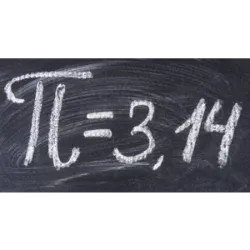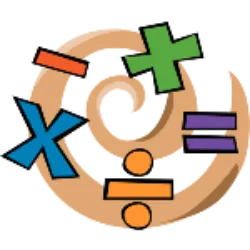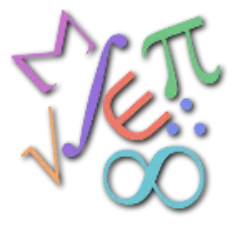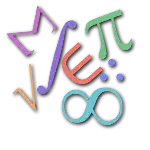Pi Approximation

Pi Approximation Day, also known as Pi Approximation Day or Approximate Pi Day, is celebrated on July 22 . This date is a reference to the approximate value of Pi (π), which is often rounded to 3.14. Pi is a mathematical constant that represents the relationship between the circumference of a circle and its diameter. The value of Pi is an infinite, non-repeating sequence of decimal digits, and its approximation to 3.14 is often used in calculations and mathematical problems. Pi Approximation Day is an opportunity to celebrate the importance of this mathematical constant and its application in various areas of science and engineering.
Addition

Addition. Properties
30 + 11 = 50 (read: The sum of thirty-nine and eleven is equal to 50.)
39 and 11 are the installments and 50 is the sum.
Addition properties:
- Commutative: a + b = b + a
Changing the order of the installments the sum does not change.
39 + 11 = 11 + 39 = 50
- Associative: (a + b) + c (b + c)
The sum does not change when associating the installments differently.
(39 + 11) + 28 = 39 + (11 + 28) = 78
- Existence of neutral elements : a + 0 = 0 + a = a
o (zero) is the neutral element of addition.
To make an estimate for a sum, we usually round numbers to the nearest tens or hundreds.
39 + 11 + 28 = 78 (Exact value)
40 + 10 + 30 = 80 (Estimate)
Test yourself with one of these challenges 👇
Discover some interesting facts about Math
Subtraction

Subtraction. Properties
39 - 28 = 11 (It reads: The difference between thirty-nine and twenty-eight is equal to eleven.)
39 (Additive), 28(Subtractive) and 11(Difference)
Note: To check whether the subtraction is carried out correctly, the fundamental property of subtraction can be applied:
The sum of the subtractive and the difference is equal to the additive.
To make an estimate of a difference, we normally round the numbers to the nearest tens or hundreds.
903 + 288 = 615 (Exact value)
900 - 300 = 600 (Estimate)
A quadratic equation, or quadratic equation

A quadratic equation, or quadratic equation, is a polynomial equation with the highest degree equal to 2. It is represented in the general form: ax^2 + bx + c = 0, where a, b and c are constants and x is the variable unknown. There are three possible types of solutions for a quadratic equation: Two real and distinct roots: When the discriminant (∆) of the equation is greater than zero (∆ > 0), the equation has two different real roots. Two real and equal roots: When the discriminant is equal to zero (∆ = 0), the equation has two real roots that are equal, resulting in a unique solution.No real roots: When the discriminant is less than zero (∆ < 0 ), the equation has no real roots. In this case, the roots can be complex conjugate numbers.
A first-degree equation is a polynomial equation whose highest degree is 1

A first-degree equation is a polynomial equation whose highest degree is 1. It is expressed in the general form: ax + b = 0, where a and b are known constants, and x is the unknown variable. The solution of a first-degree equation is a specific value of x that makes the equality true. To solve the equation: Isolation of the term with the unknown: Transfer the term containing the variable to one side of the equation, so that it remains alone. All other terms carry over to the other side. Simplification of the equation: Perform the necessary mathematical operations to simplify the equation. Variable isolation: Divide both sides of the equation by the coefficient of x to isolate the variable. Solution of the equation: The value of x that makes the equality true is obtained, called the solution of the equation. A first-degree equation has a unique solution, unless it is an identity equation, where any value of x satisfies the equality.
A set is a collection of distinct elements grouped into a single entity

A set is a collection of distinct elements grouped into a single entity. Elements can be numbers, objects, people or anything that can be uniquely identified. Sets are represented between braces {}. Some important concepts related to sets include: Membership: An element can belong to a set. If an element is present in a set, it is said to belong to that set. Empty set: It is a set that has no elements. Subset: A set is considered a subset of another set if all its elements also belong to the larger set. Union: The union of two sets is a new set that contains all the elements of the original sets, without repetitions. Intersection: The intersection of two sets is a new set that contains only the elements common to both sets.
November 23rd Fibonacci

November 23rd Fibonacci Day. The date was chosen because, when referring to the Fibonacci sequence, which is a numerical series in which each number is the sum of the two previous ones (0, 1, 1, 2, 3, 5, 8, 13, 21, etc.), the sequence can be represented by the pair of numbers (1, 1) on November 23rd, if we consider the numbers 23 and 11. The origin of the celebration goes back to the Italian mathematician Leonardo de Pisa, known as Fibonacci, who lived in the 13th century. He is famous for having introduced the Fibonacci sequence to the Western world through his book Liber Abaci, published in 1202. The sequence not only appears in various areas of mathematics, but also manifests itself in natural patterns, such as the arrangement of leaves on a plant, the reproduction of rabbits and the structures of flowers.
celebrate in November 23
Test yourself with one of these challenges 👇
HOME














